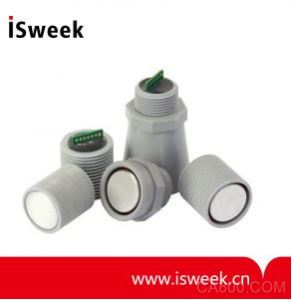Detailed application principle and detection range of ultrasonic sensor
At present, with the continuous development of sensor technology, ultrasonic sensors have been widely used in industrial production. Before we talk about ultrasonic sensors, let's look at ultrasound.
People can hear the sound is caused by the vibration of the object, its frequency in the range of 20HZ-20KHZ, more than 20KHZ called ultrasound, less than 20HZ called infrasound. The commonly used ultrasonic frequency is several tens of KHZ-tens of MHZ. The characteristics of ultrasonic waves are high frequency, short wavelength, and small diffraction. However, its most notable characteristic is its good directivity and its small attenuation in liquids and solids. It has a large penetrating power and can cause significant reflection and refraction at the interface of the media. Therefore, it is widely used in industrial inspections.

At present, there are three basic types of ultrasonic applications: transmissive type for remote control, burglar alarm, automatic door, proximity switch, etc.; separate reflective type for distance measurement, liquid level or material level; reflective type for material inspection, thickness measurement Wait.
Ultrasonic sensors are sensors that use acoustic media to convert ultrasonic signals into other energy signals (usually electrical signals). The ultrasonic sensor mainly adopts a direct reflection type detection mode. The detected object located in front of the sensor partially transmits the emitted acoustic wave back to the receiver of the sensor, so that the sensor detects the detected object. There are also some ultrasonic sensors that use a radiation detection mode. An on-board ultrasonic sensor consists of a transmitter and a receiver, which are constantly "listening" between them. The detected object located between the receiver and the transmitter will block the receiver from receiving the transmitted sound waves, so that the sensor will generate a switching signal.
The non-contact, non-abrasive detection of the ultrasonic sensor to be detected using the acoustic medium. Ultrasonic sensors can detect transparent or colored objects, metallic or non-metallic objects, solids, liquids, and powdered substances. Its detection performance is hardly affected by any environmental conditions, including soot and rain. The detection range for ultrasonic sensors depends on the wavelength and frequency of their use. The longer the wavelength, the smaller the frequency and the longer the detection distance. For example, the detection range of a compact sensor with a millimeter-level wavelength is 300-500 mm, and the detection range of a sensor with a wavelength greater than 5 mm can reach 8 meters. Some sensors have a narrow 6o acoustic emission angle and are therefore more suitable for accurately detecting relatively small objects. Other sensors with acoustic emission angles from 12o to 15o can detect objects with large tilt angles. In addition, Kobha.com recommends the MaxBotix Ultrasonic Sensor - MB7092. This sensor structure is more suitable for detecting limited installation space.

Ultrasonic Sensor - The MB7092 has excellent resistance to acoustic and electrical noise. It can detect large targets with excellent performance in clutter or noise-free environments. At the same time, real-time calibration, noise suppression, and additional filtering ensure that distance information is stable. Clutter suppression Distance information for objects that provide maximum amplitude reflections in the field of view is an excellent choice for applications that require continuous, accurate output because of extensive auto-navigation, acoustic and electrical noise environments, material level measurements, slot level measurements, etc. field.
Remote Controller Socket Converters
Remote Power Socket,Remote Control Socket Adaptors,Remote Control Plug Adapters,Remote Control Socket,Remote Power Switch
NINGBO COWELL ELECTRONICS & TECHNOLOGY CO., LTD , https://www.cowellsockets.com
